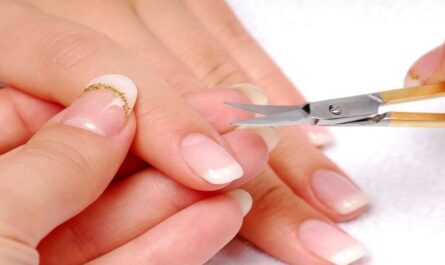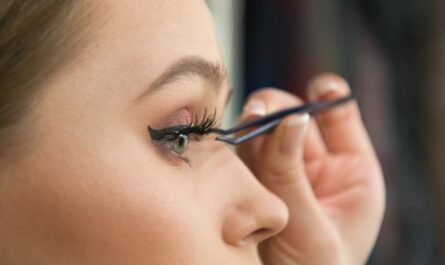Buying an engagement ring is a big and symbolic deal in a person’s life. It is the start of a journey that lasts a lifetime with a partner, and the ring is a material symbol of the love and dedication that two people share. Nevertheless, purchasing a diamond rings can be a daunting affair due to the abundance of options, a wide range of price points, and technical language. We’ve put together a thorough list of 10 guidelines to help you make an informed and significant purchase to aid you through this important decision.
Recognize the Four Cs: Carat Weight, Cut, Color, and Clarity.
Before you go diamond shopping, you must become familiar with the Four Cs—the standard diamond grading system. Cut, Clarity, Colour, and Carat Weight are the four main factors that determine a diamond’s quality and cost.
Cut: A diamond’s brilliance and sparkle are determined by its cut. A well-cut diamond’s ability to reflect light produces a brilliant visual impression.
Color: Although diamonds can be any color, colorless diamonds are the rarest and most expensive. Diamonds are quality graded by the Gemological Institute of America (GIA) on a range of D (colorless) to Z (light yellow or brown).
Clarity: Any internal or external imperfections, referred to as inclusions or blemishes, respectively, are considered to be present. Diamonds with higher clarity grading have fewer, less noticeable flaws.
Carat Weight: The diamond’s size is determined by its carat weight. Even while the carat is important, the size must be balanced with the other Three Cs to guarantee overall excellence.
Establish a Budget
Set a reasonable budget before starting your diamond hunt. Since an engagement ring or wedding ring is an expensive purchase, creating a budget will help you focus on your alternatives and avoid going overboard. Think about the value of the ring in the context of your relationship as well as your financial circumstances.
Keep in mind that the Four Cs affect a diamond’s price, so striking the correct balance between them within your means is essential. It’s not always about size; a smaller, better-cut diamond with outstanding clarity and color might have a more enticing appearance than a more extensive, lesser-quality one.
Examine Various Ring Configurations
Beyond the diamond itself, the engagement ring’s setting has a significant impact on how it looks overall. The metal framework holding the diamond is referred to as the setting. Standard options include Rose gold, white gold, yellow gold, and platinum. Every metal has distinct qualities of its own, including color, durability, and hypoallergenic qualities.
Investigate several setting types as well, like three-stone, halo, solitaire, and vintage. The setting accentuates the beauty of the diamond and matches the wearer’s fashion sense. Decide on a setting that complements the wearer’s taste and way of life while showcasing the diamond.
Think about the diamond shape.
Diamonds can be found in a variety of shapes, and the form that you choose is very subjective. Common forms include round, princess, cushion, emerald, and oval. Every form has distinct qualities. Therefore, your selected shape should match the recipient’s taste and character.
Round: Known for their remarkable brilliance, round diamonds are the most popular option for engagement rings. They are classic and timeless.
Princess: Princess-cut diamonds have a contemporary and fashionable appearance due to their square shape and pointed corners.
Cushion: Cushion-cut diamonds give off a retro and romantic vibe. They can be square or rectangular with rounded sides.
Emerald: Emerald-cut diamonds are exquisite and have remarkable clarity. They are rectangular in shape with cut corners.
Oval: Oval diamonds are attractive and stand out because they combine the traditional round shape with a distinctive extended silhouette.
Research and Choose a Reputable Jeweler
Choosing the correct diamond is less important than picking a trustworthy jeweler. Look up jewelers in your area and online, check reviews, and get referrals from friends and relatives. A reliable jeweler should give outstanding customer service, a certificate from an accredited gemological laboratory, and be open and honest about the diamond’s parameters.
Make sure the jeweler follows moral guidelines, especially if you have doubts about the gems’ provenance. Ask your jeweler about their sourcing procedures; several are dedicated to selling conflict-free diamonds.
Request a Diamond Certificate
Always request a diamond certificate from an accredited gemological laboratory, such the GIA or AGS, when buying a diamond. The certificate attests to the diamond’s quality and originality by offering a thorough examination of its Four Cs. A certified diamond gives you the assurance that you are getting precisely what you paid for and are making an informed choice.
Explore Lab-Grown Diamonds
Lab-grown diamonds are becoming widely liked as a morally and environmentally sound substitute for diamonds that are mined. Despite being produced in a controlled environment, these diamonds are chemically and physically identical to their natural counterparts. Because lab-grown diamonds are frequently less expensive than mined diamonds, you can get a more significant or better-quality stone without going over your budget.
Examine lab-grown diamonds if ethical sourcing and sustainability are important to you. Remember, though, that not everyone is aware of these diamonds, so be ready to defend your decision to loved ones.
Pay Attention to Ring Size and Style
Find out your partner’s ring size before you buy it. If it’s an unexpected proposal, ask a friend or family member to assist you determine the correct size or steal one of their rings covertly. Getting the ring size correct from the beginning is crucial because an ill-fitting ring might be uncomfortable and require resizing.
Take into account the ring recipient’s tastes and way of life. Lower profile settings could be more practical if they work with their hands a lot or lead an active lifestyle. However, a more ornate location can be appropriate if they value style and glitz.
Think Long-Term: Maintenance and Insurance
Consider the engagement ring’s long-term maintenance and preservation after you’ve discovered the ideal one. Maintaining the diamond at its best requires routine care, such as cleaning and prong inspections. To maintain the ring looking its best, take advantage of the free cleaning services that many jewelers offer.
Furthermore, think about purchasing insurance for the engagement ring. Even though it could appear like a needless investment, it offers protection against loss, theft, and damage. For information on available coverage, speak with your homeowner’s insurance or look into specific jewelry insurance companies.
Personalize the Ring
Lastly, add a personal touch to make the engagement ring unique. Customization options are available from many jewelers; you can add a birthstone, engrave a special message, or select a unique setting. Customization not only raises the ring’s sentimental worth but also demonstrates care and consideration during the choosing procedure.
In summary
Purchasing a diamond engagement ring is a big decision that has to be carefully thought through. You can choose a trustworthy jeweler, investigate various ring settings and designs, establish a budget, and comprehend the Four Cs to make an informed and significant buy. Consider lab-grown diamonds as an ethical substitute, get a certificate of authenticity for your diamond, and consider practical details like ring size and upkeep throughout time.
In the end, the ideal engagement ring is the one that complements your partner’s distinct tastes and fashion sense. You can start your search for the perfect lifetime symbol of love and devotion by keeping these pointers in mind.




